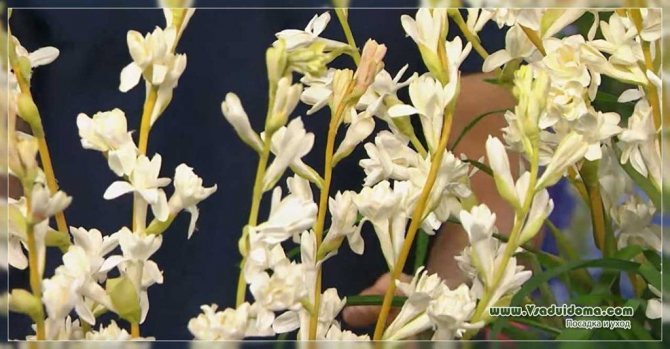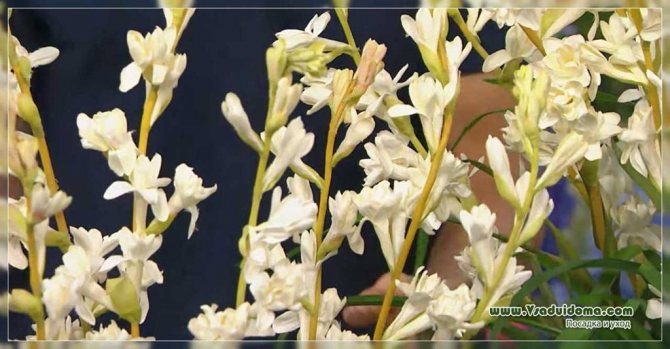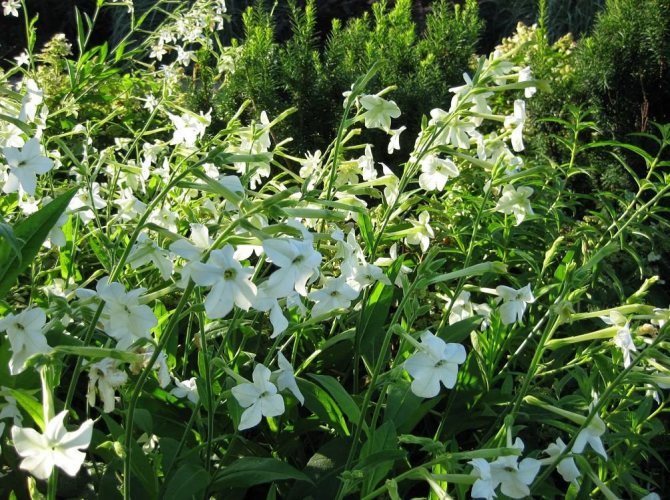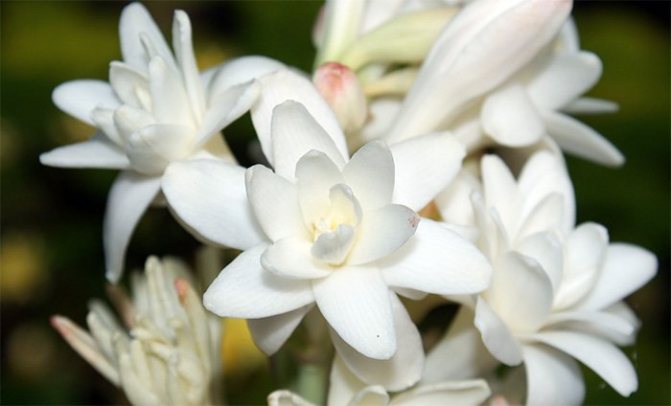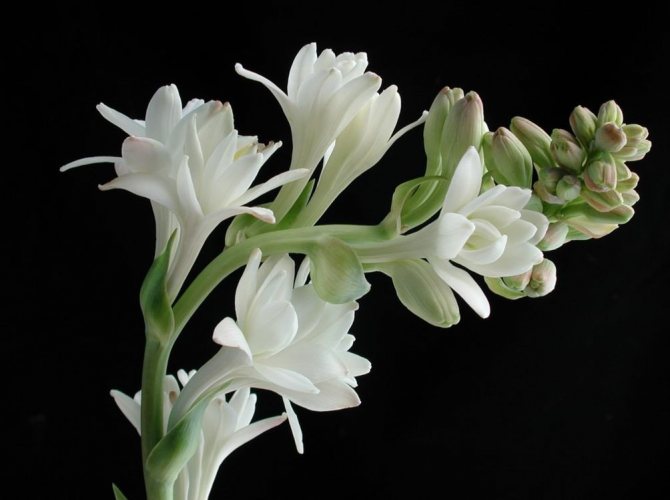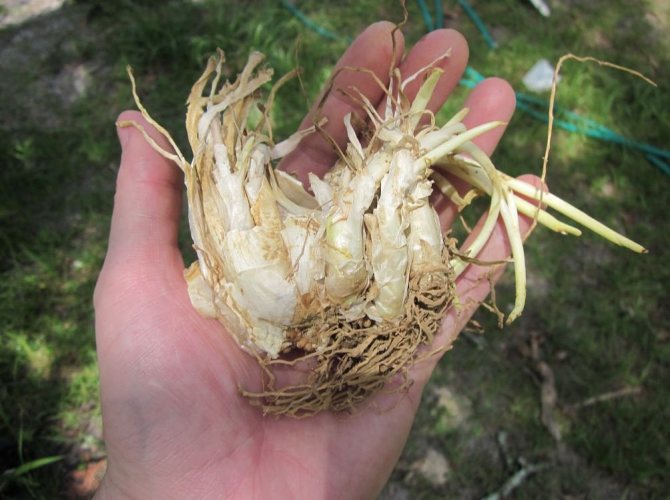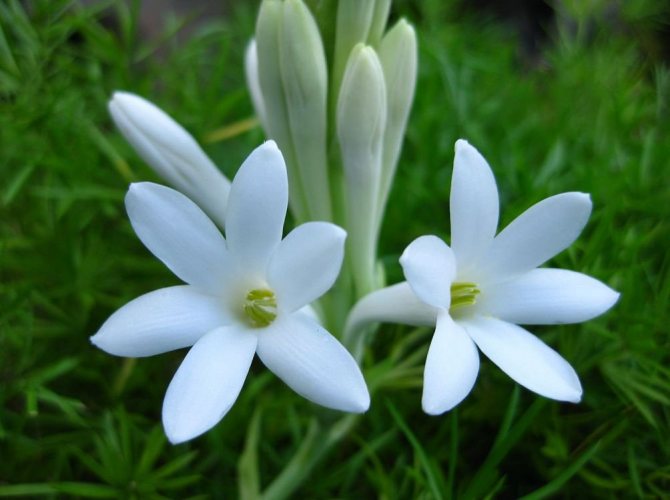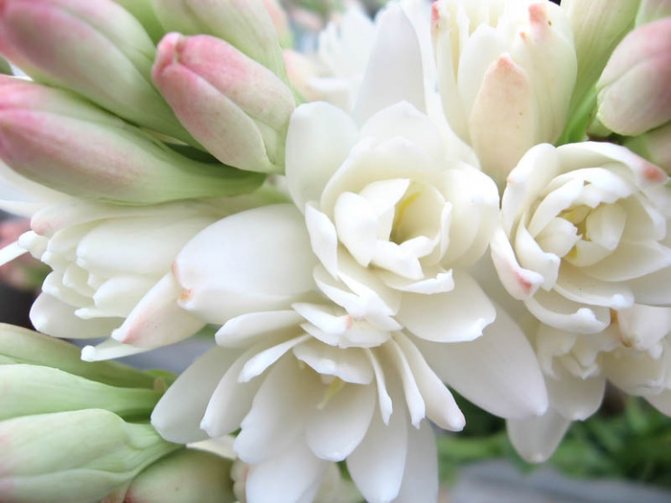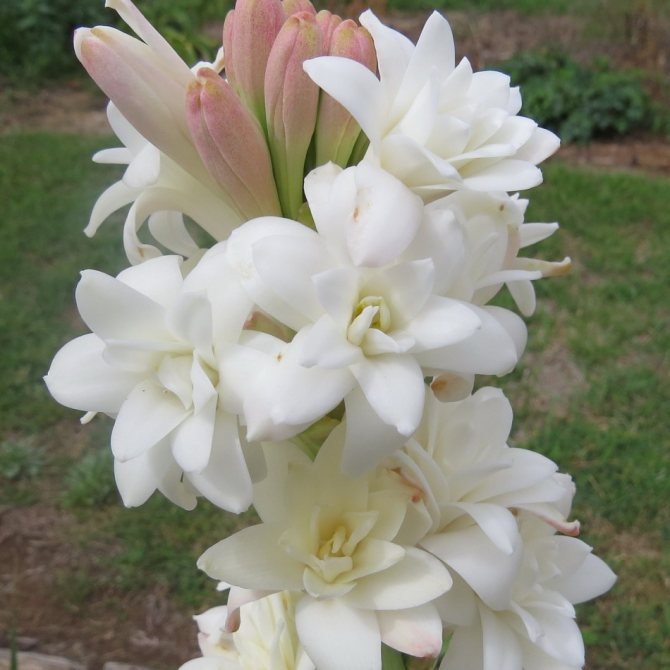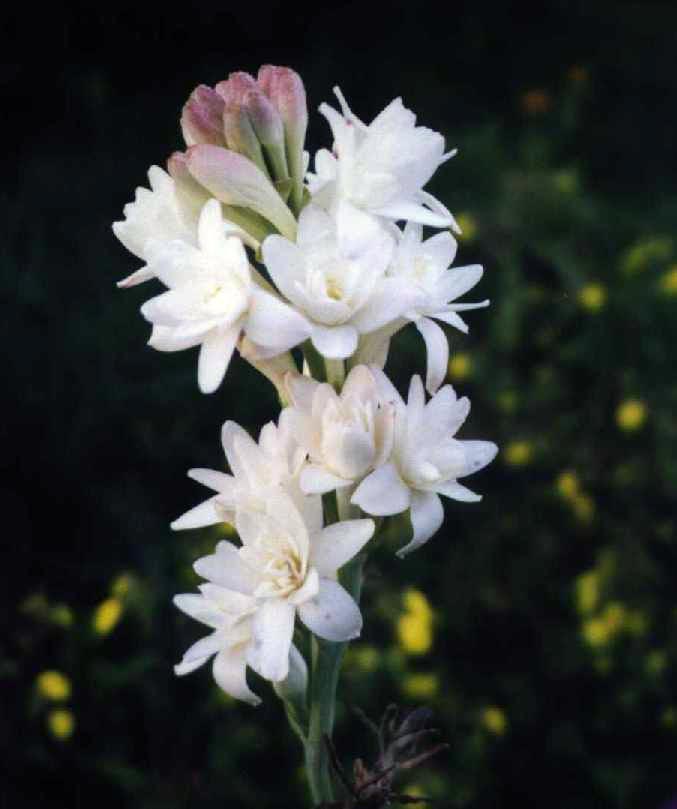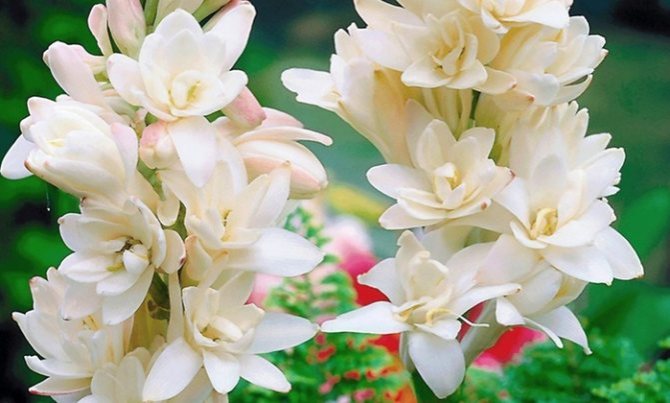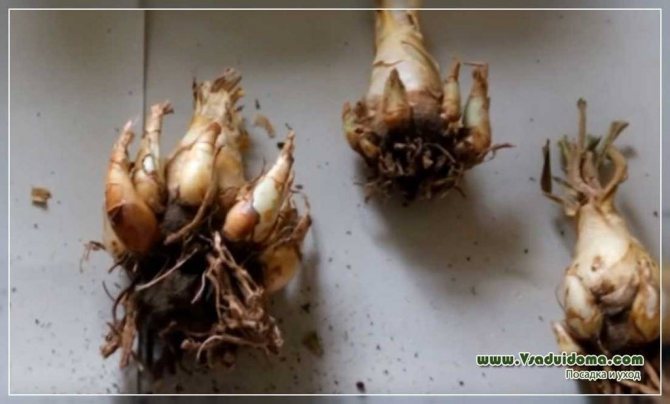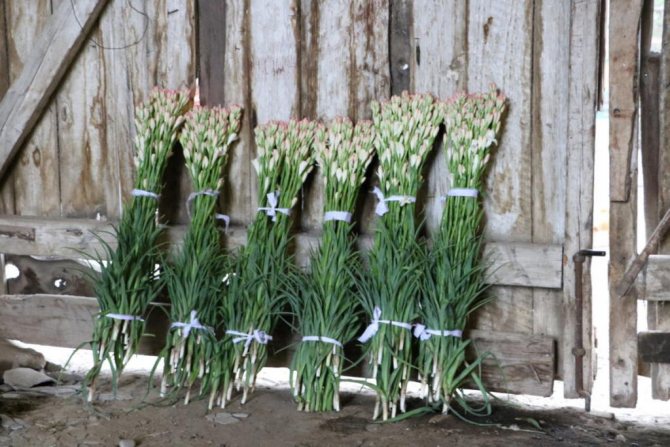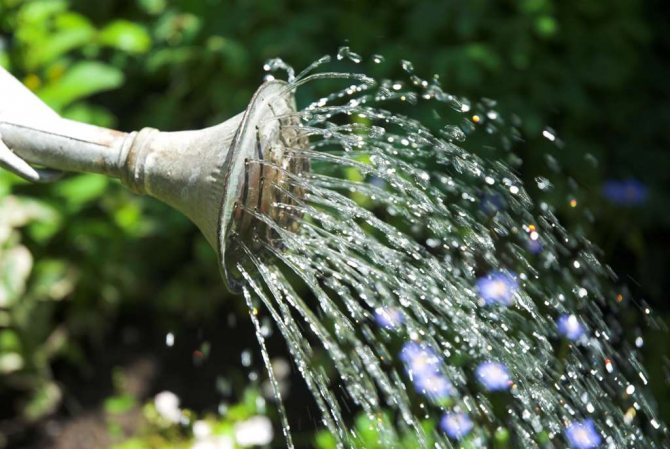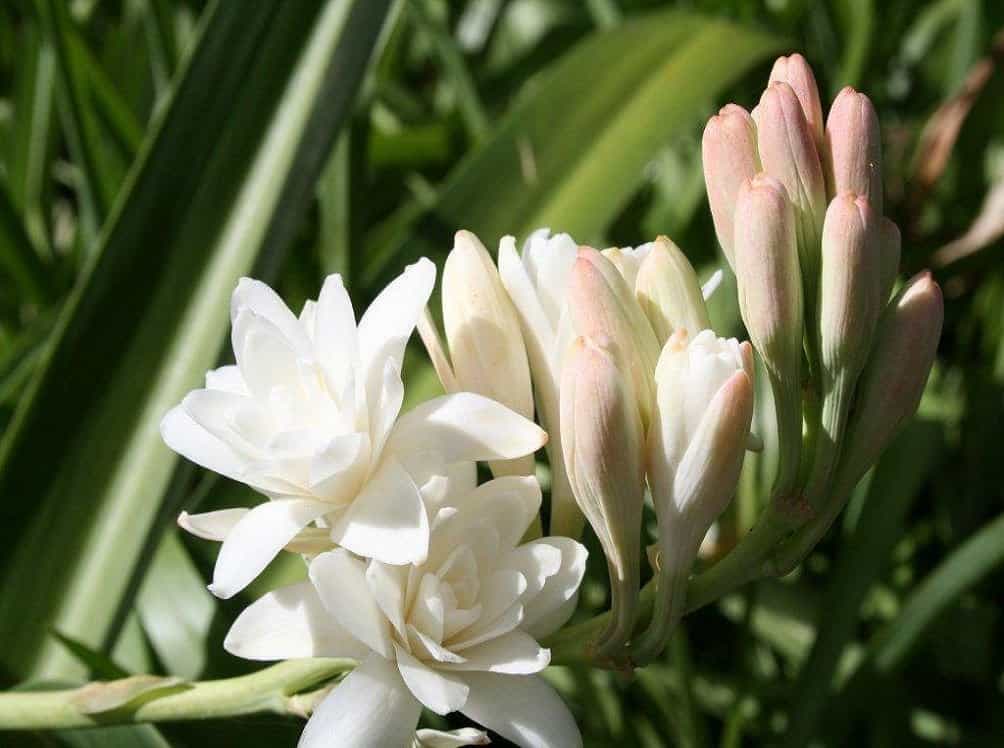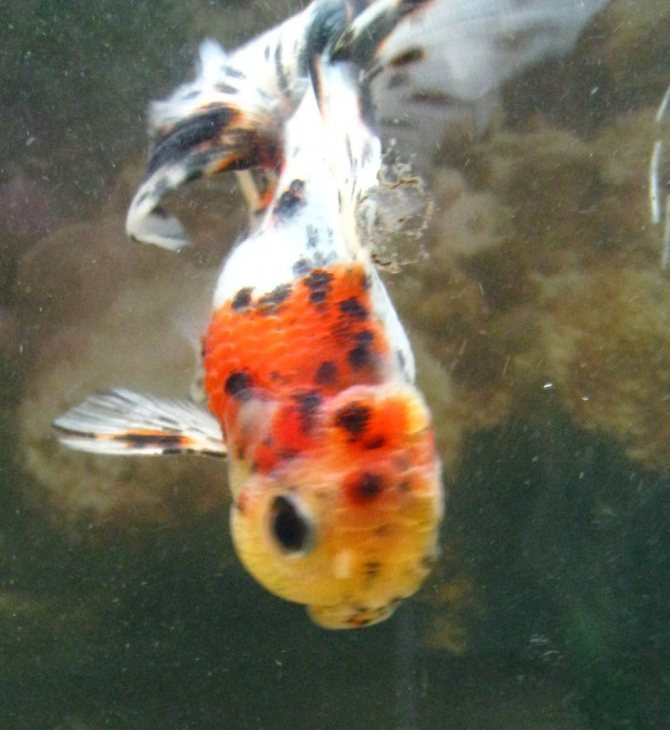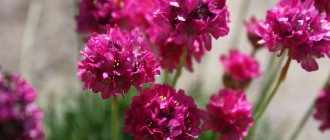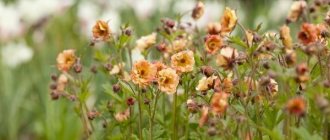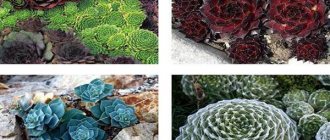Tuberose is a perennial plant that is part of the Asparagus family. The representative of the flora stands out beautifully with dense inflorescences that have a rather pleasant aroma. The scent of the flower strongly resembles lily, daffodil and gladiolus. The essential oils of these plants are widely used in the perfume industry. Few people know that world brands ("Gucci", "Dior") mass-produced perfumes from tuberose. For example, Estee Lauder eau de parfum water under the Tuberose - Gardenia brand is widely popular all over the world.
The natural habitat of the tuberous polyanthes ("Polianthes Tuberose") is the territory of modern Mexico. Back in the 16th century, the plant was brought to India, Eurasia and North Africa. The flower does not "like" severe frosts, so it is grown in garden pots or dug out of open ground in late autumn.
Tuberose planting rules
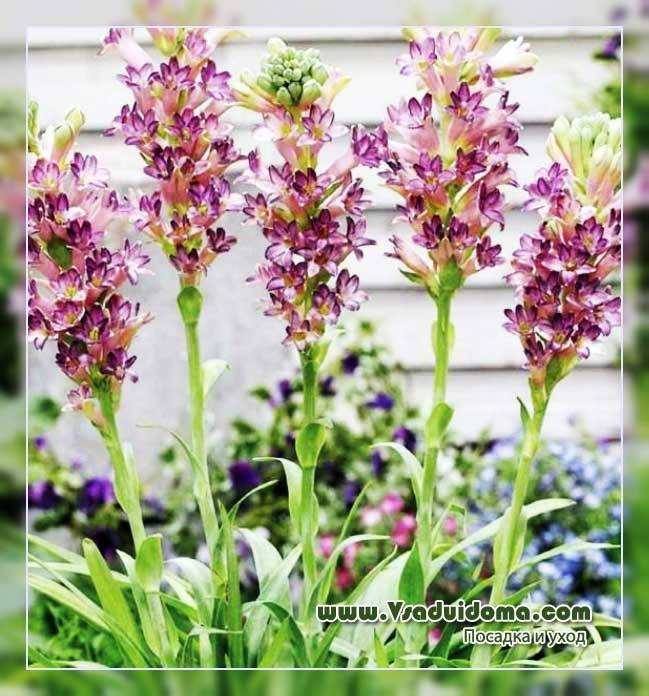
A couple of times I bought tuberose tubers, planted them in open ground in March, but the plants did not develop well and did not give flowers. When and how to plant them correctly? What kind of soil do they prefer?
Nina Sulimova
Tuberose (polyanthes) tuberous is a light and moisture-loving plant. It is undemanding to soils, but it grows better on rich in organic matter, well-drained loams. Tolerant of partial shade, however, when planted in shaded areas, flowering is delayed, and it is not as intense as in the sun. The soil is prepared in autumn or early spring, digging a plot to a depth of about 20 cm. Organic fertilizers (humus, compost) are applied at the rate of 1-2 buckets per 1 sq. M. In areas with stagnant moisture, plants should be planted on raised ridges. They start planting with the onset of stable warm weather, when the soil warms up to +10 degrees. The optimal time in the southern regions is early April. They are planted to a depth of 3-5 cm, if you deepen it even more, the flowering productivity decreases, but the tubers of large fractions will turn out to be larger (therefore, decide in advance what is more important for you: long-term powerful flowering or, nevertheless, multiplied planting material).
Depending on the size of tubers, up to 25-40 pieces are planted for each square meter, and up to 50-70 for babies. Thickened plantings negatively affect flowering. As a rule, seedlings appear two weeks after planting full-fledged tubers. Tuberose blooms in 3-4 months and pleases before the onset of a cold snap.
Causative agents
Mycobacterium has unique properties, it is a large genus with more than 130 species that differ from each other and can infect not only animals, but also humans. For example, such obligate pathogens as Mycobacterium tuberculosis (tuberculosis in humans) and Mycobacterium leprae, which becomes the causative agent of leprosy, are dangerous to humans. But saprophytes are also quite common in the soil of Mycobacterium terrae, which are absolutely safe.
Tuberculosis in fish is caused by the bacteria M. marinum, M. fortuitum, as well as M. Chelonae and some others. There are about twenty different species in total. At the same time, the bacterium infects more than 34 families and 150 species of aquatic organisms, but most often the disease develops in labyrinth, salmon, haracin, cichlids and cyprinids, which are at risk.
Care and digging of tuberose
How to care for plants during the growing season? What is the best way to feed them? Is it possible to separate the baby immediately after digging the tubers? Antonina Korolkova
During the growing season, tuberose is regularly watered (especially in dry summer, but waterlogging should not be allowed), weed and loosen the soil. Mandatory in the "menu" - 2-3 additional fertilizing with full mineral fertilizer.For example, you can use urea, superphosphate, potassium salt (1: 3: 3.40 g mixture / sq. M). The first half of the dose is introduced into the wells before planting and spilled with water, the second - a month after germination. The next top dressing is in July. It is important to remember that excessive nitrogen nutrition contributes to the formation of tall, thin, easily lodging peduncles and the damage to plants by diseases (primarily gray rot).
The tubers of the plant are dug out at the onset of cold snaps (before the first frost).
After harvesting, the dried roots and leaves are cut off. After cleaning, the tubers together with the baby are stored, approximately like the corms of gladioli, in a dry room at a temperature of + 6-8 degrees, and an absolute humidity of 60-70%. The baby is separated 3-4 days before planting, so that a cork layer of tissue can form on the surface of the planting material if accidentally damaged, which will prevent infection of the plants.
On the balcony
What do tuberose tubers look like and how quickly do they “age”? Tell us about the nuances of planting them in pots on the balcony.
Victoria Malysheva, Bryansk
The tuberose tuber is elongated pear-shaped with cord-like roots, covered with brownish-brown membranous scales. In fact, it is a "monocarpic", that is, it blooms only once, although many small children are formed around it every year.
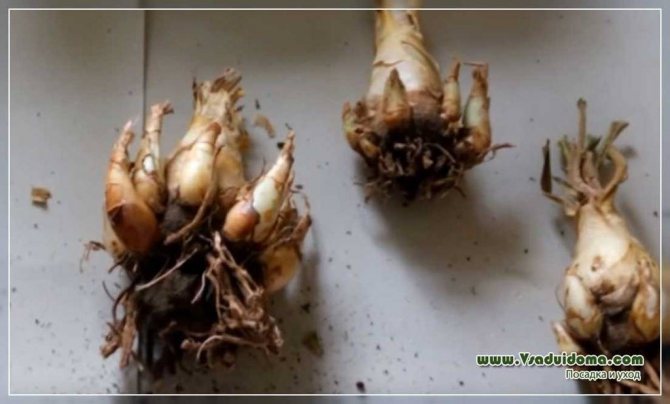

To decorate the balcony and get lush flowering, the tubers are planted in March, three in a small pot (five to seven or more in a relatively spacious container). The soil mixture is the same as for growing. It usually takes 4-5 months from planting to flowering. After flowering, "aged" tubers can be used for seasonal planting in the open field in order to get a new baby.
To bloom
And my tuberoses never bloomed this summer. What can be done for them in the future in order to still admire the fragrant inflorescences?
Marina Voropaeva
In more northern regions, plants that did not have time to bloom in summer in September are carefully transplanted with a lump of earth into containers and transferred to a room where they have more chances to bloom.
Or you can use the "reverse method" next season, that is, to accelerate flowering, grow tubers in pots in advance. To do this, they are taken out of storage, warmed up and planted in containers at an earlier date (February-March) in a mixture of turf and leafy soil with the addition of sand (1: 1: 1), kept indoors at an appropriate temperature (up to + 20- 22 degrees), watered. And after the threat of recurrent spring frosts has passed, they are transferred into open ground. You can grow tubers on wet moss (neutral peat is also suitable) at +25 degrees, in the dark until roots appear. Another express method: the tubers are kept in a solution of any of the root formation stimulants (Ribav-Extra, Kornevin, Kornerost, Epin, according to the instructions) - in this case, the roots appear quite quickly.
Reproduction
During the summer season, the tuberose bulb grows overgrown with many children - sometimes it reaches up to 20 "offspring". Already in the middle of summer, children can be separated from the mother's tuber. Viable babies are those that have a diameter of about 2 cm: by the end of the current season, it is quite possible to get a full-fledged seed for the next season from them. Keep in mind that babies left on the tubers after digging should overwinter on the mother's bulb.
As for seed reproduction, this method is only suitable for areas with a very mild, warm climate. In addition, the plant will need special conditions (temperature, humidity, etc.), which causes too many difficulties. But how the Orchid propagates by cuttings, this information will help to understand.
Tip: If you buy tubers from the store, carefully inspect them before purchasing.It is best to choose bulbs with a diameter of no more than 2 cm, with a pronounced conical shape, a convex base.
Cutting tuberose into bouquets
I decided to grow polyanthes as a cut crop. Are there any special requirements for caring for plants after planting tubers? How to cut the inflorescences correctly and can they be kept in bouquets for a longer time?
Ignat Podgainy, Voronezh
When growing tuberose as a cut crop, it is advisable to separate the baby formed during the growing season, since it immediately begins to germinate, thickening the planting and interfering with the development of the main peduncles. Therefore, the corms are carefully dug in and the baby is removed, the soil is compacted.
"Babies" are grown, they are good, and most importantly, they quickly take root, and during the season about 30% of them grow to the size of tubers II and even I parsing, in favorable conditions some specimens manage to form a new baby. Tubers grown from it bloom for 2-3 years. For bouquets, the inflorescences are cut when the first one or two pairs of buds are fully open. Plants in this stage of dissolution tolerate transportation well, and the likelihood that the apical buds will not open is reduced.
To keep the bouquet in a cart with water longer, you can use special preservatives (for example, "Chrysal" or "Chrysal ", according to the instructions). Experienced florists have their own "home recipes". You can add table vinegar (2-3 tsp / L of water) or regular sugar (2-3 tsp / L of water to the water by adding 1 drop of bleach). Sugar is used as a preservative, and bleach disinfects the environment from harmful microorganisms.
Danger to humans
You must be extremely careful, because mycobacteriosis in fish is dangerous to humans. If the disease is found in the abode of the aquarium, then all disinfection work should be carried out by a person who does not have abrasions or cuts on his hands. If there are open wounds on the skin, then the pathogenic bacterium quickly penetrates the affected epithelium and provokes the development of the inflammatory process. If you suspect infection, you should immediately visit a dermatologist.
Security should not be neglected. Ulcers can form on the skin of the hands, which will take years to heal. Of course, tuberculosis of fish will not go further than the skin of the hands, because the temperature inside the human body is too high.


Let's protect polyantes from pests and diseases!
Tuberose tuberose is quite stable in culture, however, under unfavorable conditions, it can be damaged by pests and diseases, both when grown in open and closed ground. Let's talk about the most common ones.
| Name | SIGNS OF DAMAGE (DAMAGE) | COMBAT METHODS |
| Spiderweb mite | The presence of cobwebs on the stem or leaves of plants. With mass reproduction of the pest, spots appear, which subsequently increase and become similar to whitish areas, then the entire leaf dries up and falls off. | Biological: infusions of medicinal dandelion (25-30 g / l of water, leave for 2 hours), onion husks (15 g / l of water) or garlic pulp (1 70 g / l of water, insist for a day). Chemical: the use of insectoacaricide of biological origin "Fitoverm", EC (0.8 ml / 10 l of water). For reprocessing, you can use "Vertimek", EC (1 ml / 10 l of water). |
| Aphids (various types) | Visible to the naked eye. The parts of the plant affected by the pest are as if covered with honeydew droplets. Over time, sooty mushrooms appear on these sweet secretions. The leaves are chlorinated (discolored), deformed. Young buds fade. Aphids are a carrier of viral diseases. | Biological: distribution of natural enemies of the pest: ladybug, hoverfly, lacewing. Chemical: application of "Fitoverma" (10 ml / l of water). For repeated treatments, "Aktara", VDG (0.5-1 g / l of water) is suitable. |
| Thrips | It is difficult to detect a pest in the initial stages of damage. During mass reproduction, the leaves are covered with stripes of sucked and dried cells, flowers and buds are deformed, the plant has a wilted appearance. On the flowers or the upper side of leaves, in the feeding places, numerous excrements of green or black color appear, lesions in the form of depressions and streaks of a silvery color. | Chemical measures: use of Aktara insecticides VDG (0.5-1 g / l of water), Alatar, EC (5 ml / 10 l of water), Iskra Zolotaya, VRK (5 ml / 10 l of water). It is important to observe the time interval - spray the affected plants at least once a week. |
| Gray rot | On the leaves, shoots and buds, brown spots first appear, which soon become covered with a gray bloom. It is easily transferred to other plants as well. | Chemical: biological product "Fitosporin-M" - soil treatment before planting (1 5 ml / 10 l of water, per sq. M) or treatment of the plant during the growing season (10 ml / 10 l of water) foliar and root methods. Soaking tubers before planting in "Heteroauxine", GRP (2 g / l of water), spraying in the bud formation phase with a solution of "Immunocytophyte", TAB (2 g / l of water). |
Illustrations
photo 1. - Philomena, Moenkhausia red-eyed (Moenkhausia sanctae-filomenae) tuberculosis patient


photo 2 - Discus patient with tuberculosis
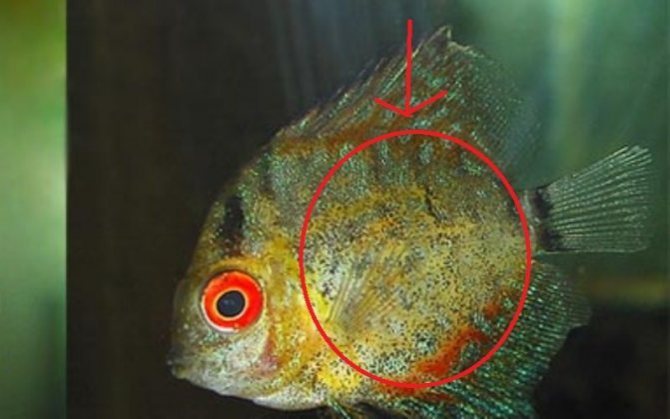

photo -3 spleen of a fish with tuberculosis, tubercles are visible (granulomas, nodules containing a microorganism).


photo 4 - Sokolof's pseudotropheus, a patient with mycobacteriosis.


photo 5 - Lyaliusa patients with tuberculosis with a shrunken back, pale coloration and loss of scales.


photo-6 - scraping of scales in a goldfish.


photo - 7 - guppy croaker, curvature of the back with tuberculosis


The most popular varieties of tuberose-polyanthes


Among the variety of varieties of polyanthes tuberous, which are grown in the open field in the southern regions, and more often as an attachment (container) culture in the colder middle lane, are popular:
Tuberose The Pearl
with double waxy white flowers. The height of the plants is about 100 cm.
Tuberose varieties Sensation and Pink Sapphire
with bright pink-lilac flowers, the second inflorescence is even larger and more luxuriant.
Tuberose Yellow Baby
with flowers of a pastel yellow shade in narrow loose inflorescences.
ORDER QUALITY AND CHEAP SEEDS AND OTHER PRODUCTS FOR HOME AND COTTAGE. PRICES ARE BOTTLE. CHECKED! JUST SEE YOURSELF AND BE AMAZED. THERE ARE REVIEWS. GO >>>
Below are other entries on the topic "Cottage and garden - do it yourself"
- The main indicators of growing seedlings: Memo for growing seedlings - ...
- Memo on the use of drugs for pest and disease control: Table of drugs to combat ...
- The main indicators of sowing and planting seedlings: Sowing and planting seedlings - ...
- Sowing biennials: timing - a reminder to the florist: When to sow biennial flowers What flower ...
- Dates for sowing seeds and planting seedlings - memo: Dates for sowing seeds and planting ...
- Spraying and processing the garden in April (memo to the summer resident): How to spray the garden in April ...
- How to measure fertilizer - a reminder to the gardener and gardener: HOW TO MEASURE THE NECESSARY AMOUNT OF FERTILIZER Often ...
Subscribe to updates in our groups and share.
Sources of TB infection in aquarium fish
The risk of contracting tuberculosis is great due to the many sources of infection. However, in many cases, you can prevent infection by simply looking after your pets.
The following sources of the disease can be differentiated:
- Sick fish.
- Mycobacteria introduced into the aquarium.
- Insufficient disinfection of inventory.
- Food.
The greatest danger is posed by mycobacteria, which are found almost everywhere, even in well-kept aquariums.
a brief description of
This plant was discovered in Mexico and is now grown in large quantities in India.There are 13 types of tuberose, but only 2 of them are grown for decorative purposes: tuberous polyanthes and broadleaf polyanthes.
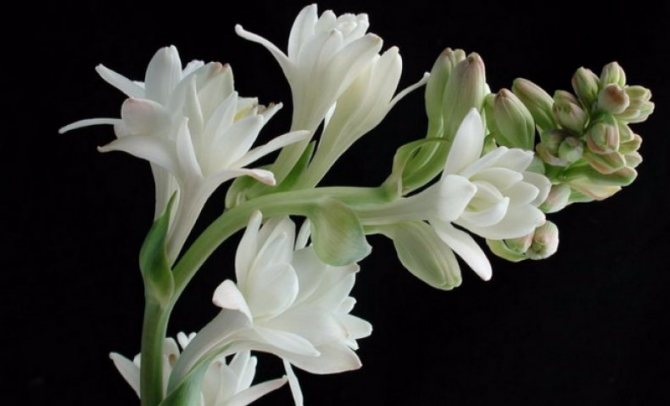

Like aloe, dracaena and lily of the valley, this plant belongs to the Agave subfamily. Large flowers (4-6 cm in diameter) of white, pink or lilac color are collected in inflorescences on a long stem. The Agavov family also includes such plants as: yucca, sansevieria, dracaena Sander, nolina. Tuberose is prized for its extraordinary rich aroma, which is similar to the scent of daffodils, oriental lilies and hyacinths.
Did you know? Tuberose extract is used in perfumery for the production of perfumes, smoking sticks and aromatic oils. Only one liter of oil can be obtained from one ton of flowers.


